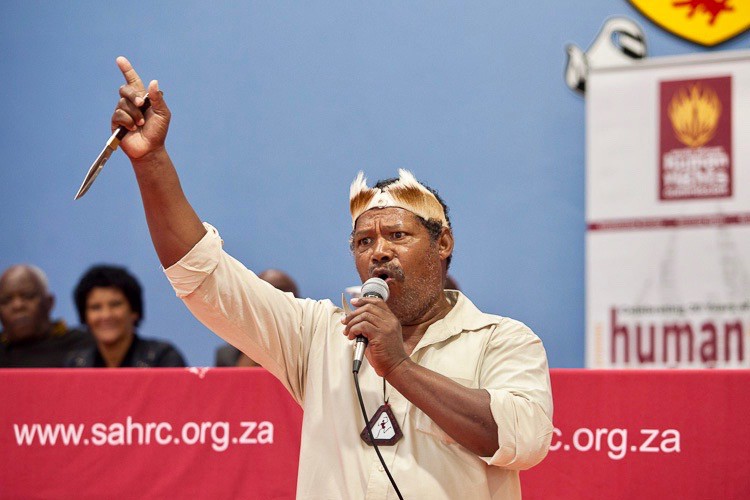Sometimes, gangsterism is the norm
Cape Flats residents paint a complex picture of the causes of gang violence
According to government, drug use, alcohol abuse and unemployment are prime drivers of gang violence in the Western Cape. But people living in the Cape Flats paint a more complex picture of the circumstances and family gang life.
This emerged on Wednesday at an open dialogue about ‘Violence on the Cape Flats’, hosted at the Tygersig Primary School in Uitsig by the South African Human Rights Commission (SAHRC).
Residents and representatives of South African Police Service (SAPS), the Department of Correctional Services (DCS), the National Institute for Crime Prevention and the Reintegration of Offenders (NICRO), and the Trauma Centre spoke about the gang violence that plagues the Cape Flats.
Chris Nissen, Western Cape SAHRC Commissioner, said, “We can minimise crime and the loss of life by building a partnership between community and government institutions.”
“If you want to deal with the violence in the Cape Flats, particularly gang violence, you must also deal with the underlying causes, because most of the gang violence will be influenced by drug bait – who controls which streets for drug purposes,” said Delekile Klaas of the DCS.
In the Western Cape, there are 29,000 inmates in the prison system, according to Klaas. Of these, 10,000 are in remand at any time, the majority of them arrested for murder, rape and assault, and 80% of these come from the Cape Flats.
Jacqualine Hoorn, a representative of NICRO, said that perpetrators come from broken families. “They come from communities where unemployment, crime, violence, alcohol, drugs is the norm,” said Hoorn.
In communities with a lot of gangsterism, residents are sometimes forced to be part of the gang violence “not by choice, but in order to survive” said Hoorn.
Sometimes, gangsterism is the family norm. “If you look at the gang leaders … it’s about the third or fourth generation,” said Hoorn.
Ravensmead resident William Moses, who is a supporter of Men against Rape and Abuse and the Institute for the Restoration of the Aborigines of South Africa, said the biggest killer “in my society” was the knife.
Valdi Van Reenen-Le Roux, Executive Director of the Trauma Centre, an organisation that works with survivors of torture and victims of violent crime, told how last year she counselled a gang member from Manenberg who had been tortured by police officers.
She said when his family was evicted from District 6, they had struggled to survive. At the age of five, he had been beaten by gangsters. At 13, he had witnessed the murder of a loved one. At this point, she said, he had realised that he could not depend on anyone for justice, and to get revenge, he joined a gang.
“Unless we begin to understand how our communities are thinking about violence and how they are seeking solutions to it, we will not begin to address the problem,” said Van Reenen-Le Roux.
According to Van Reenen-Le Roux, it is a social development issue. “You cannot expect SAPS to pick up on issues that are within the family. That is generational.”
Major General Felix Mbeki of SAPS said that they were doing everything in their power to prevent violence, but the police needed assistance from the community. “The people who commit these violent crimes are living with us; it’s our children,” said Mbeki.
The main reasons for crime in these areas are unemployment and poverty, he said.
Daniel Brown, a resident of Elsies River, said gang members were recruited from as young as nine years old.
“We are the people on the ground. But people don’t listen to us. The police has no intelligence in our areas,” said Brown. “We do help the police in our communities,” he said, but sometimes people did not trust the police as they were seen to be in the “pockets” of the gangsters, he said.
Next: Court strikes blow against quackery
Previous: No “blank cheque” for Cash Paymaster Services, says Court
© 2017 GroundUp. 
This article is licensed under a Creative Commons Attribution-NoDerivatives 4.0 International License.
You may republish this article, so long as you credit the authors and GroundUp, and do not change the text. Please include a link back to the original article.



